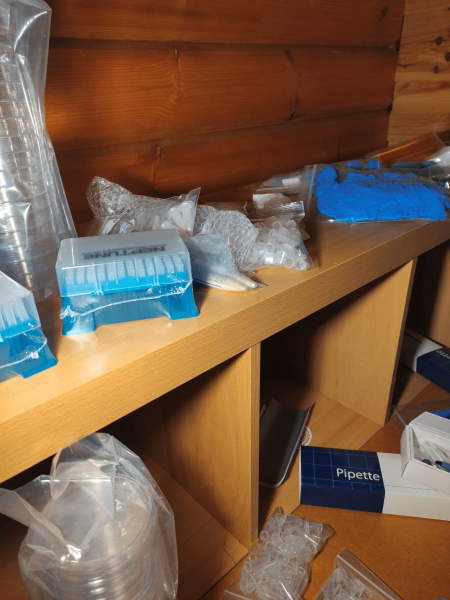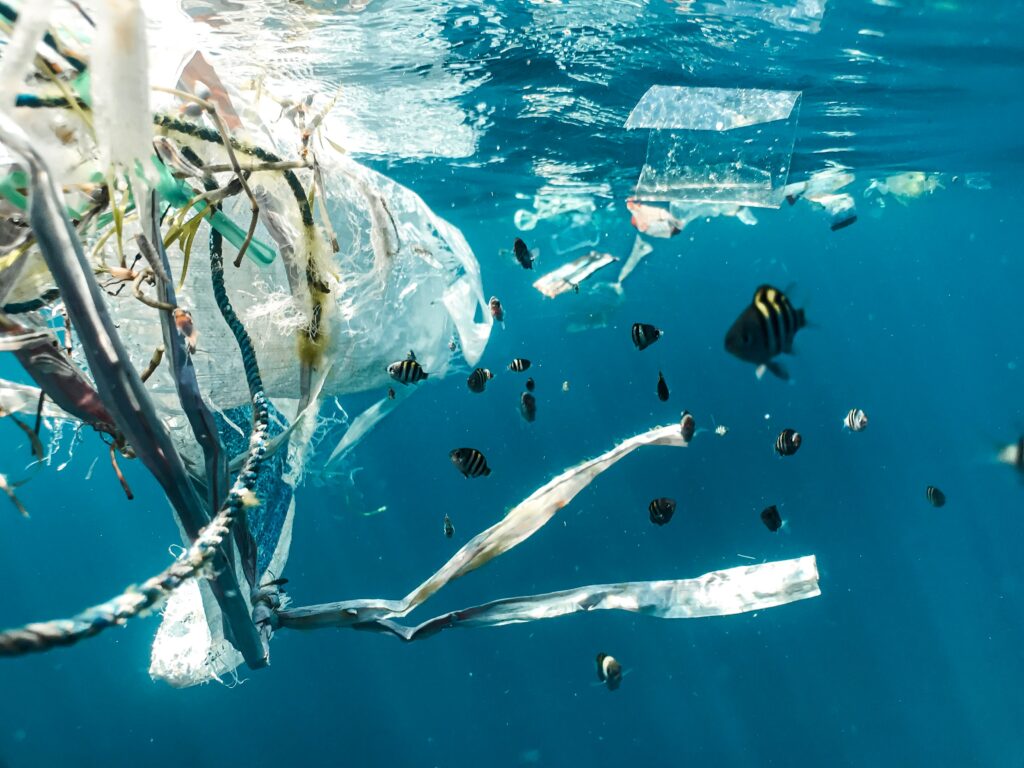More than 200 kg of plastic is thrown into the seas and oceans every second. This plastic disintegrates over time due to ultraviolet rays and friction with air and water to form microplastics. These are finally digested by marine animals and climbing the food web ends up having an impact on our health as well. While it is true that much of the plastic waste ends up in the so-called plastic islands due to sea currents, many microplastics remain in the Mediterranean. In 2018, despite representing only 1% of the world’s maritime surface, 7% of the world’s microplastics were in the Mediterranean Sea [1]. And Spain is the second largest landfill for plastic waste in the Mediterranean (with 126 tons of plastic dumped per day) [1].
Clearly, something needs to be done about it. It is not enough to stop dumping this waste, because what we have been accumulating in the sea is enough to have serious long-term consequences. You have to get them out of the sea. There are many companies working in this line, the most famous possibly called The Ocean Cleanup [2], which is dedicated to removing floating microplastics from plastic islands, and prevents plastics from the world’s most polluting rivers from reaching the sea. But it turns out that only 1% of plastic remains floating on the sea surface [3], so these approaches do not act on the remaining 99% of waste.

Thinking about how to get rid of non-floating plastic, it occurred to me that you can take advantage of nature: algae are excellent water filters. Perhaps algae capable of filtering and removing microplastics can be made. But I didn’t know how to do it. 30 articles, 40+ emails, and many hours of study later, I found that was theoretically possible. In this article I will try to explain my idea, but especially the process to carry it out, as well as the resources I have discovered along the way.
An enzyme is a molecule produced by cells – through DNA – that promotes and regulates chemical reactions in living things. Each enzyme is responsible for carrying out a specific chemical reaction. In particular, there is an enzyme called PETase that is able to break down PET-type plastic chains (one of the most common types of plastic, which would naturally take four hundred and fifty years to degrade) into by-products [4] , which in turn can be broken down by another enzyme (MHETase) into molecules that can take advantage of some algae to grow, or as an energy source [5]. That is, if the DNA strand encoding the production of these enzymes could be integrated into the genome (the total DNA sequence of an organism) of algae, they would have the ability to “feed” of plastic.
But living things are very smart: if genetic modification doesn’t help them survive, they’ll expel that piece of DNA we’ve incorporated. Therefore, for this idea to work, algae would only have to produce PETase and MHETase if they detect plastic in their environment; otherwise, it would be a waste of energy. To detect whether or not there was plastic around the algae, I needed some sort of biological sensor. Fortunately, there is a protein capable of detecting an acid that turns out to be the same as that produced by PET-type plastic as a result of decomposition (in microplastics) due to the sun’s ultraviolet rays [6]. Interestingly, this acid is the main component of the drug Aspirin [7]. If it could cause the algae to detect the plastic triggering the production of enzymes that remove that plastic, the project would be viable.
So I set out to investigate how I could genetically modify algae to incorporate these proteins. A priori it seemed that I would need two fundamental things:
- A super lab that cost millions of euros;
- Some way of designing the plasmid — that is, a DNA molecule that can exist, replicate, and be incorporated into a host cell; for computer scientists, the plasmid can be thought of as a function to be incorporated into current code in a given piece of hardware (the genome of the host cell) – to introduce new DNA into algae.
It turns out that for just over 100€ I was able to set up a laboratory with enough equipment to be able to genetically modify algae (and other living things). All the necessary material can be found cheaply on online sales platforms (such as Amazon or AliExpress), or on other pages dedicated exclusively to home labs [8]. In addition, I contacted many Catalan laboratories asking if they had leftover disused material. Often this material ends up in classrooms in case the lab is associated with a university, or ends up thrown away, recycling some component if possible. But this is not always the case. Luckily, one of the labs had just bought some new machines and wanted to get rid of the old ones, and he gave them to me.

As for the design of plasmids, I discovered that there are free programs that allow you to do this task [9], and studying a bit with free online resources [10][11][12][13], you can really create whatever you want: deer milk without a deer? Spicy tomatoes? Spider web without the need for spiders? No problem! What’s more, once the plasmid is designed, you can ask companies to print it for you and send it home, as if it were a 3D-printed figure. If it is for educational purposes, it could even be free. On top of that, there are already created plasmid banks that you can take as a base to modify, or if they already do what you need, you can buy them for about 50€ [15].
In my case, however, I saw that a group of Spanish researchers had already created a plasmid ready to be introduced into bacteria (much more studied than most algae) and that it incorporated the protein that can detect plastic. And when it was detected, the bacteria shone [6]. I contacted them, they sent me this plasmid already incorporated in bacteria. Now it was necessary to change the plasmid in order to produce PETase and MHETase, instead of shining when detecting the plastic. And check that it works. The only way to do this was to add microplastics to the bacteria. Where could I get my microplastics? I contacted a company in Barcelona that had done a pilot test to capture microplastics from the sea using buoys with filters on the beaches of the Catalan coast. They then collected and analyzed these microplastics. They left me a few microplastic samples that they had already analyzed.
It also needed to work on algae, not bacteria. This point was especially complicated, as the genetic variability between algae is massive. To give you an idea, there are algae that share a much, much lower percentage of genetic material with each other than humans with whales. Therefore, wanting to genetically modify an algae, understanding the word algae as a general concept, is absurd: it is necessary to specify which algae we are talking about. I had to take a course to better understand what kind of algae I am interested in modifying for this project [17]. Another issue was legal. Obviously, a genetically modified organism cannot be released into the environment without first undergoing extensive controls, a process that can take years, and in some cases decades. This was also dealt with in the course.
The problems do not end here, once a certain profile of algae was found (for example: salt water, resistant to temperature changes so that it could be extended to most seas in the world, etc.), you had to look a way to get it. Fortunately, there are some repositories where you can buy specific algae [18][19]. And once it was done, it had to be able to reproduce without being contaminated. Therefore, a specific equipment is needed: a photobioreactor. Luckily, although the word sounds very professional, it is not difficult to make one, on a small scale, with material that, again, can be bought on online sales platforms, for a reduced price (about 40€). In my case, however, I contacted an incubator in Tarragona for projects made specifically with microalgae [20], which offered me 10,000 liters of spirulina (one of the best known algae)!

Then another problem comes into play: not all organisms can be genetically modified today. In particular, spirulina has great defense mechanisms against viruses and other genetic material. On the one hand, it is a great candidate for this project, as it is a very resilient body. On the other hand, only one research group in the world has been able to successfully genetically modify spirulina [21]. I contacted them to explain my project, and to ask if they saw it as feasible to carry it out with spirulina. I was told that the project, as proposed, would not work with spirulina because it did not have the natural ability to secrete a certain type of molecule into the environment, including PETase and MHETase. In short, a very technical detail that would never have crossed my mind without having studied biotechnology or similar fields in depth. Luckily, asking experts saved me a lot of headaches! Well, if I wanted to get the project going, I had to make spirulina also create a protein that would act as a tube between the inside and the outside of the cell through which the two enzymes could pass. Everything was getting more and more complicated. So spirulina didn’t seem like a good option, I had to find another one.
In the midst of this whole story, I came across a student from Indonesia who had done a theoretical publication that was specifically about genetically modifying algae to introduce the genes that encode PETase and MHETase [22]. I saw that I, from so much asking, I had knowledge on the subject that she did not have, and at the same time she had some that I did not have. So we created a kind of symbiosis to move this project together, from the other end of the world. We were also helped by his tutor, an American man, who guided us in everything we needed to do. An intercontinental trio trying to remove plastics from the sea; looks like a movie script.
For personal reasons, and because all the bacteria in my lab was contaminated, the project was over at that time, at least for me (in Indonesia they are still working on this topic, two years later). If anyone is interested in resuscitating this project, please do not hesitate to contact me [23]!
I would like to end by emphasizing the fact that everyone I contacted throughout the project responded to me. They didn’t always respond with what I wanted, but in the end I found someone who would help me with whatever I needed at any given time, whether it was lab machines, a particular plasmid, or just knowledge. And I think that’s especially important, because we often don’t do things for fear of being told no. But by asking we have nothing to lose, we don’t have anything if we don’t ask. So, by asking, we can only win. And it seems that whenever you try to take action for the common good, and as long as you ask kindly, society is ready to help you with whatever you need. I believe that beyond the technical knowledge I have gained throughout this project, the most valuable knowledge I have gained has been learning to ask.
References:
